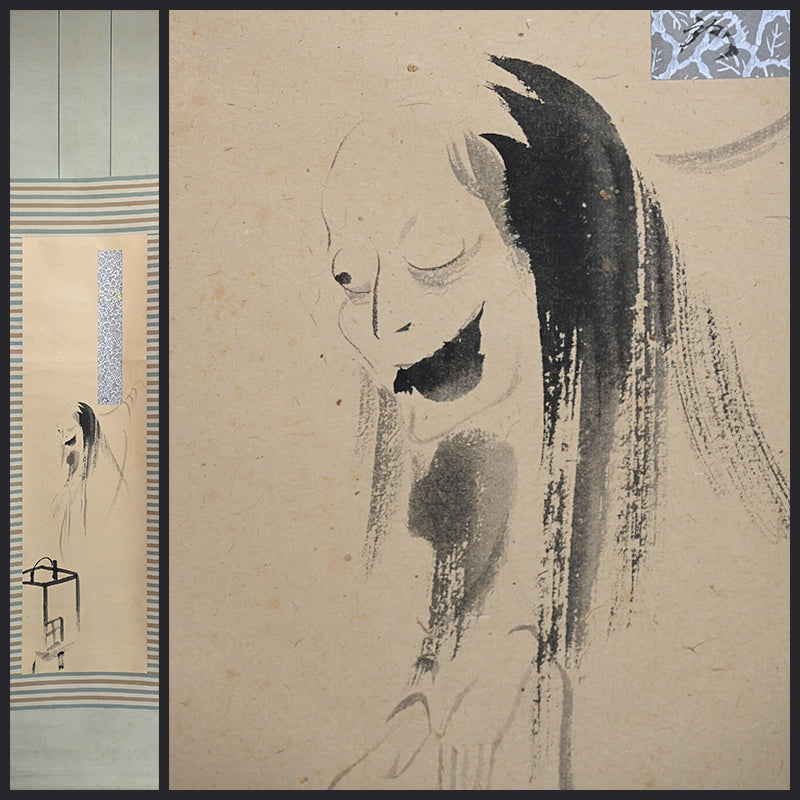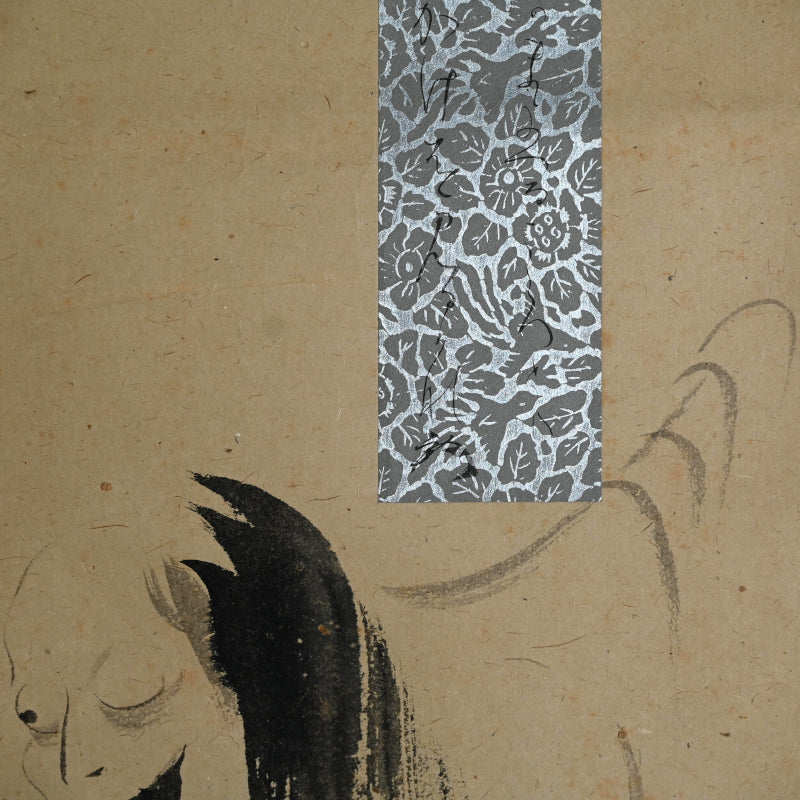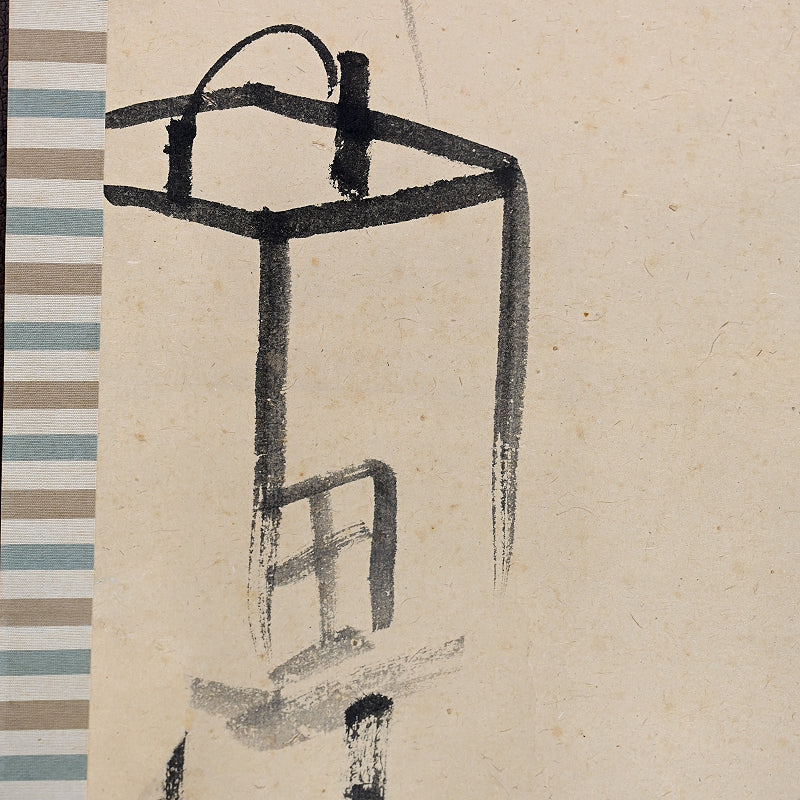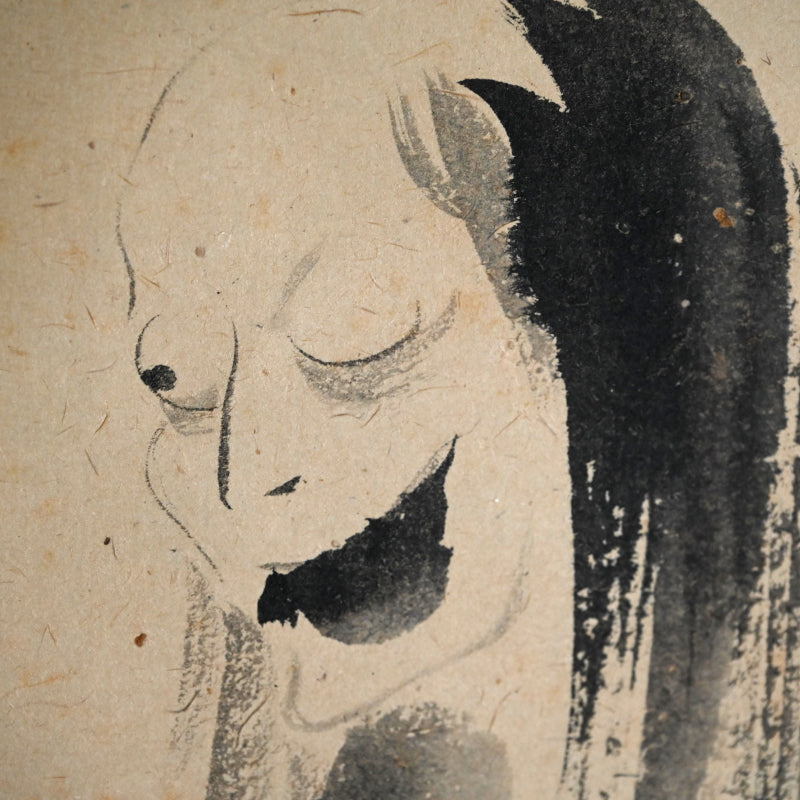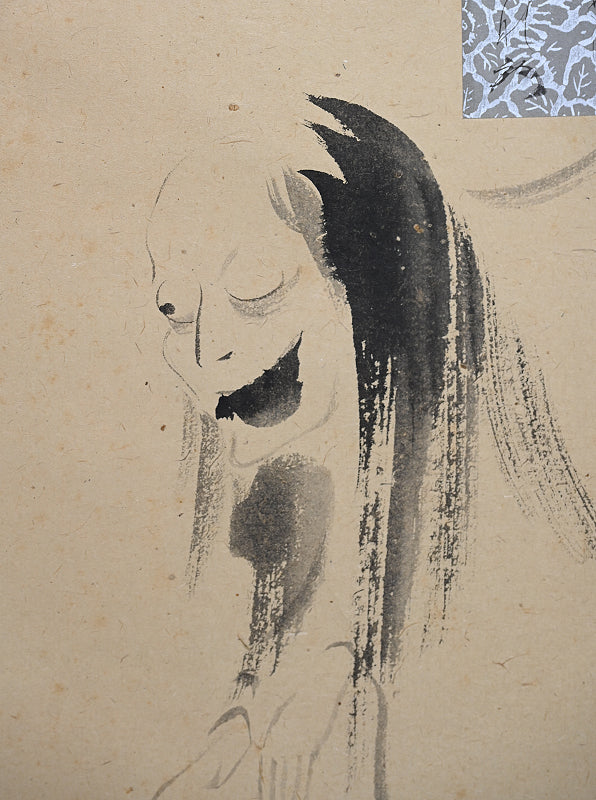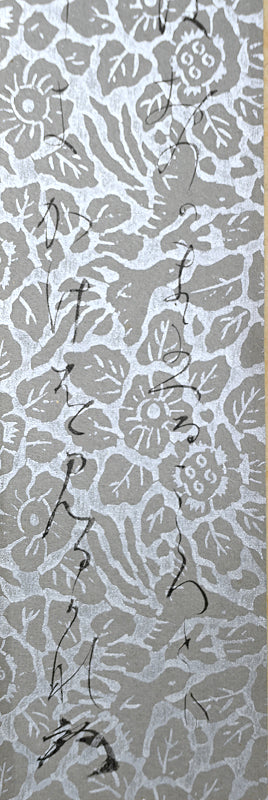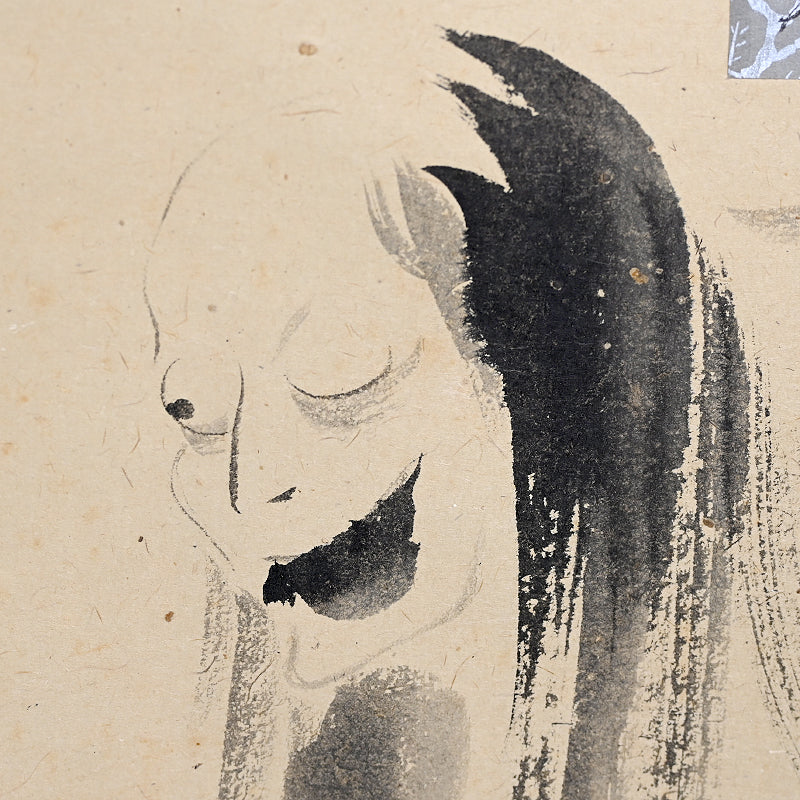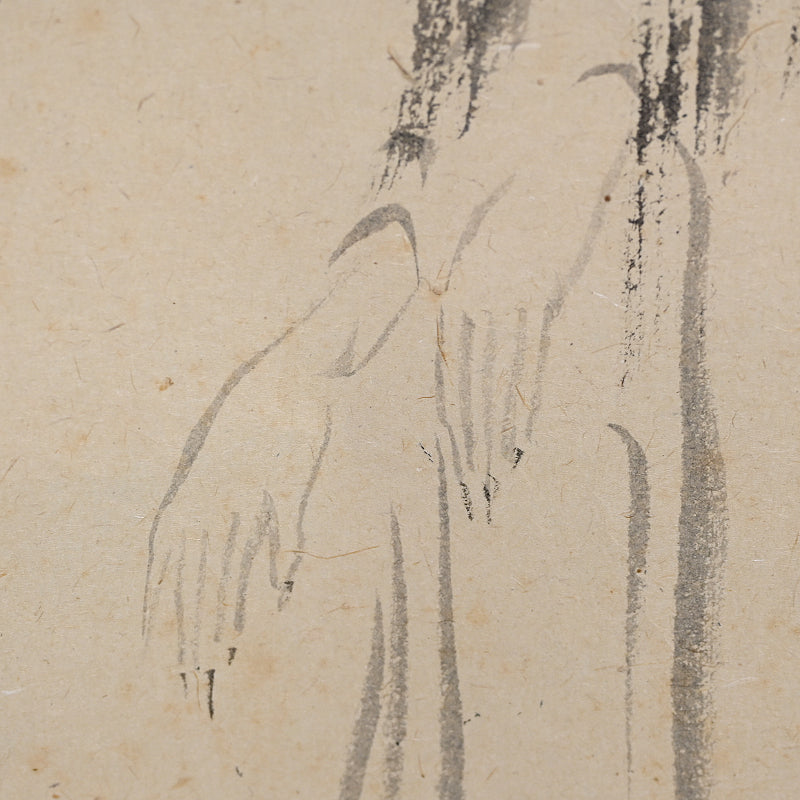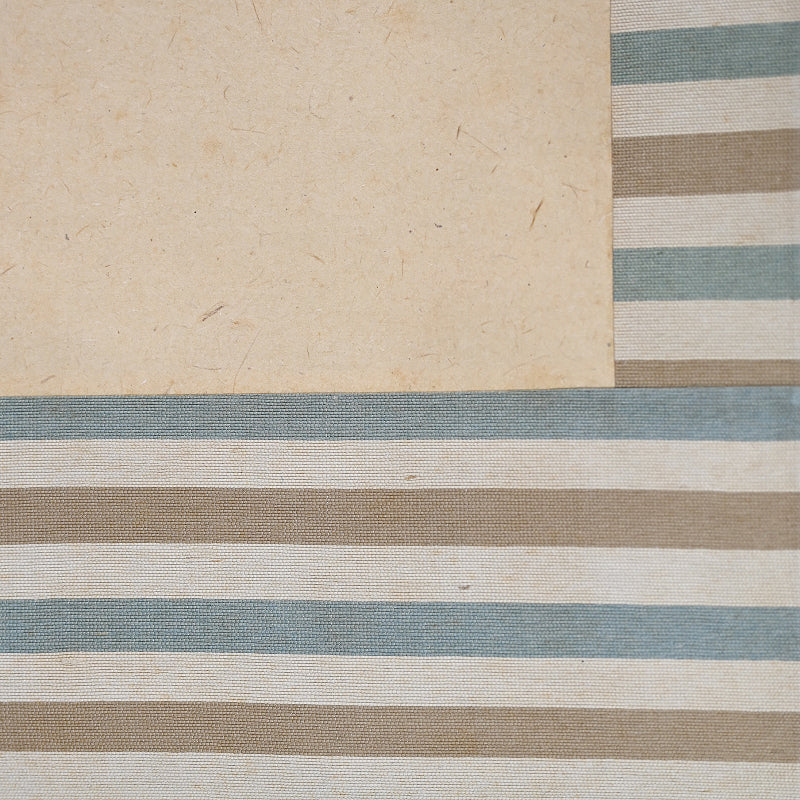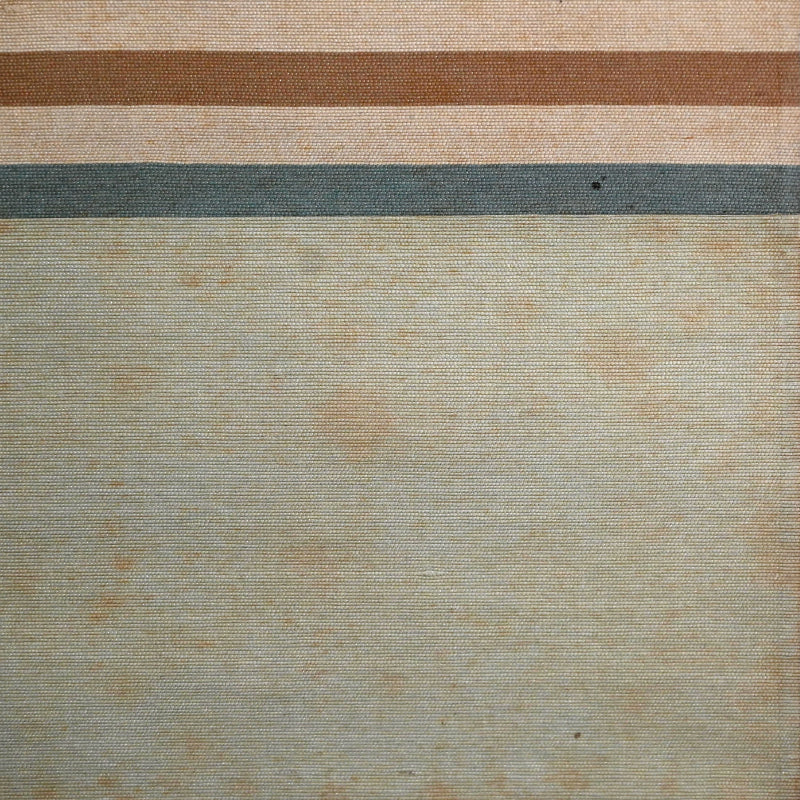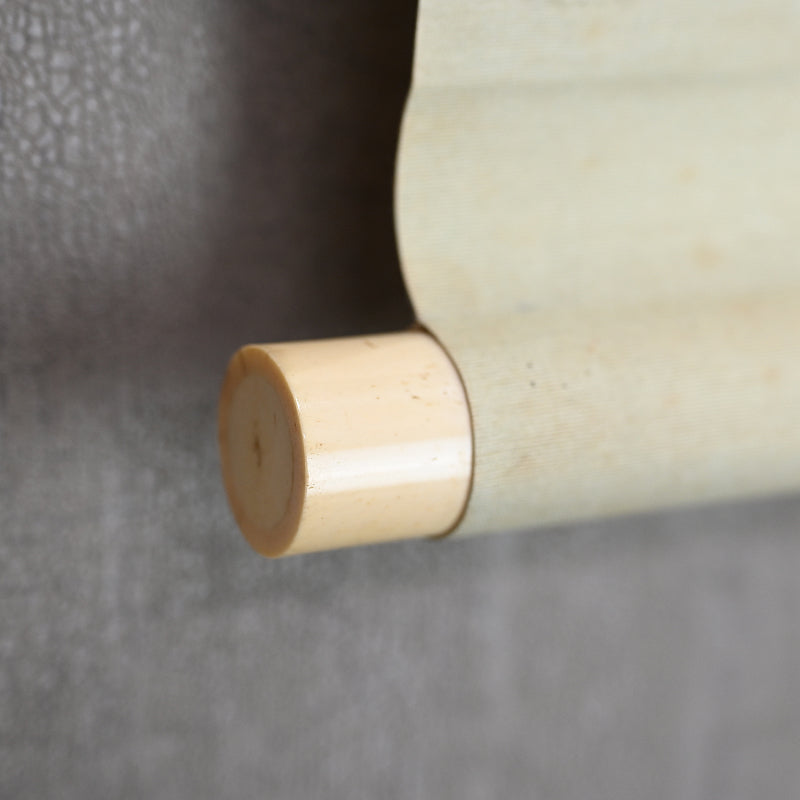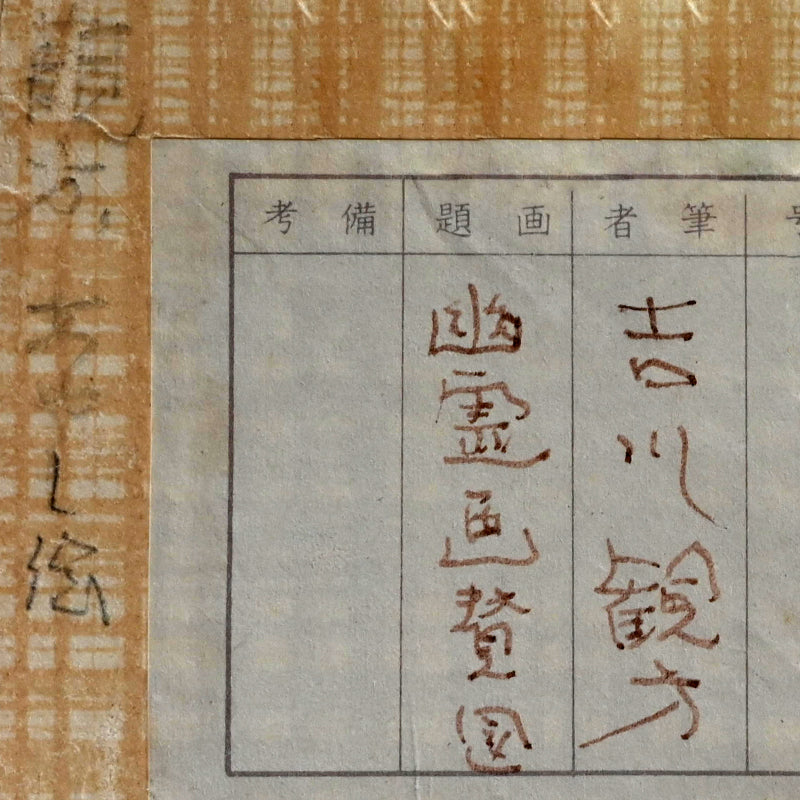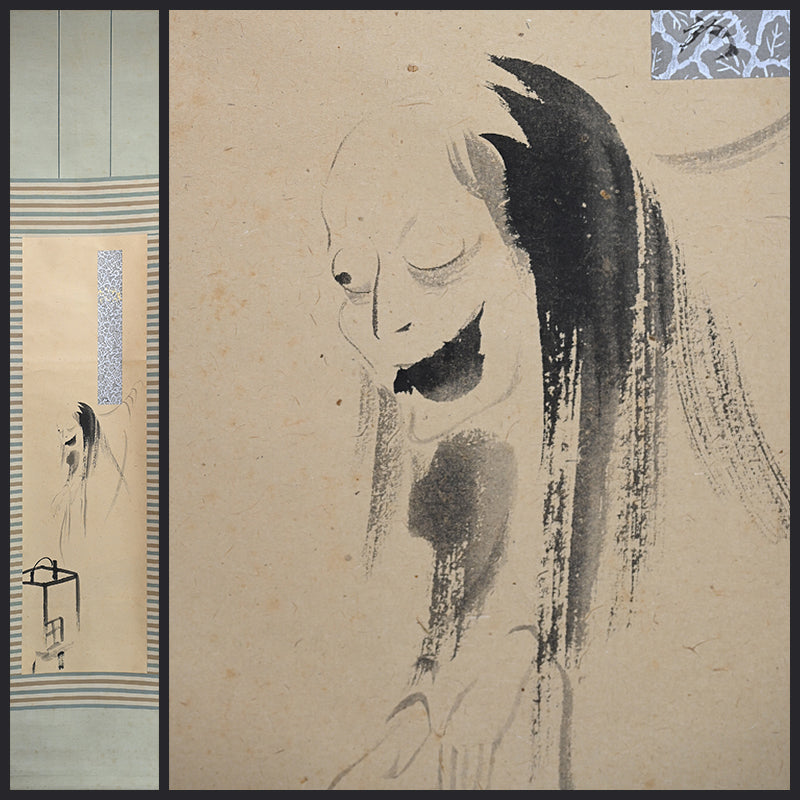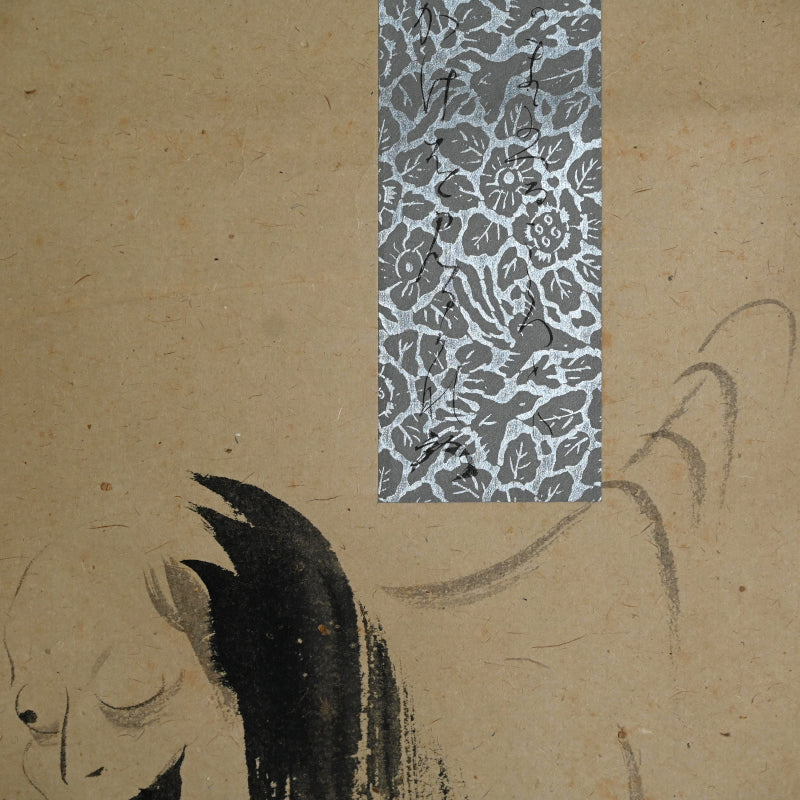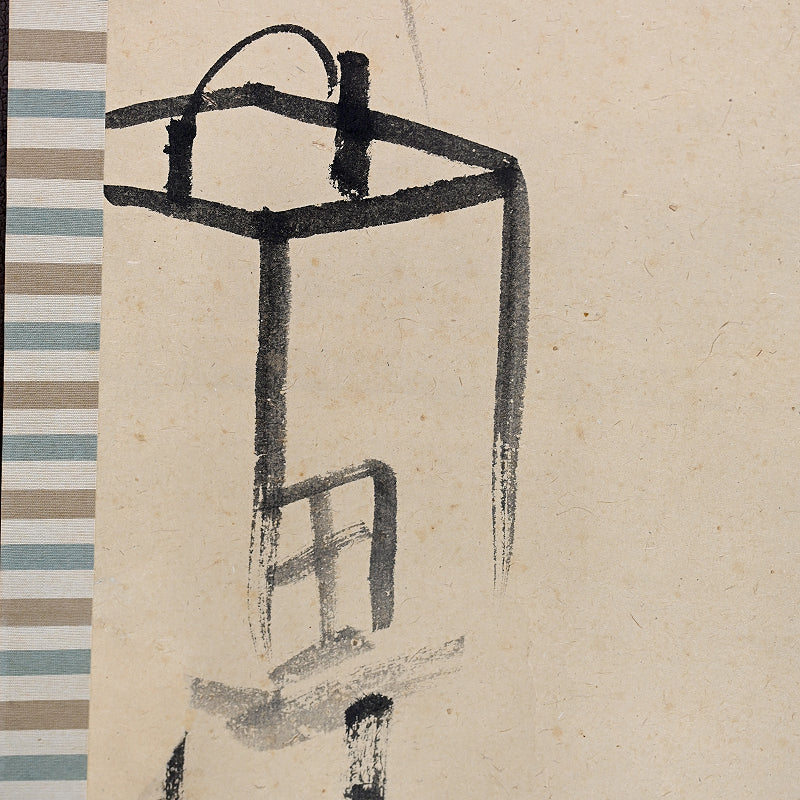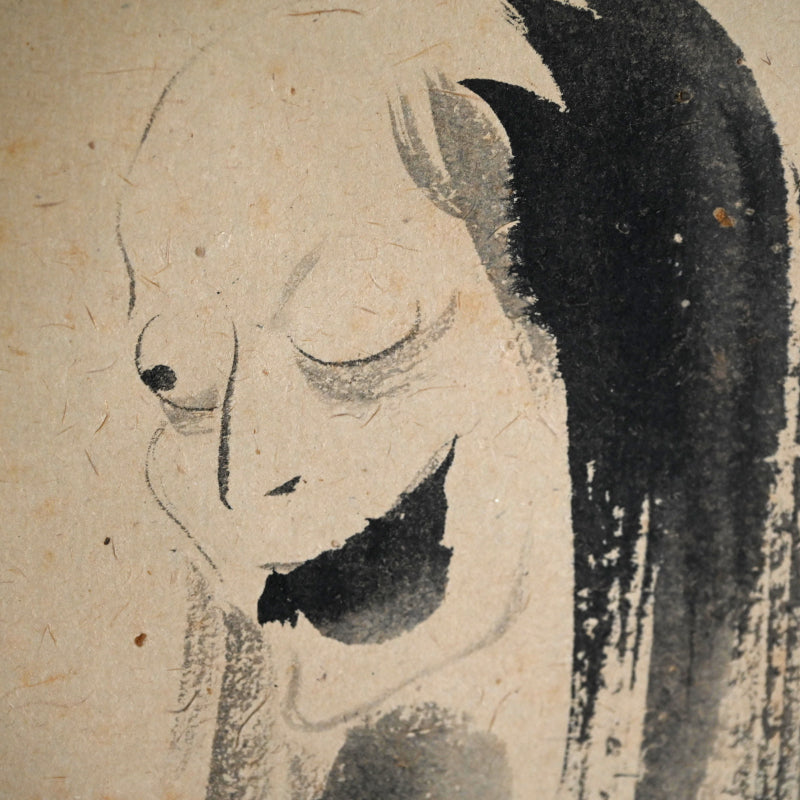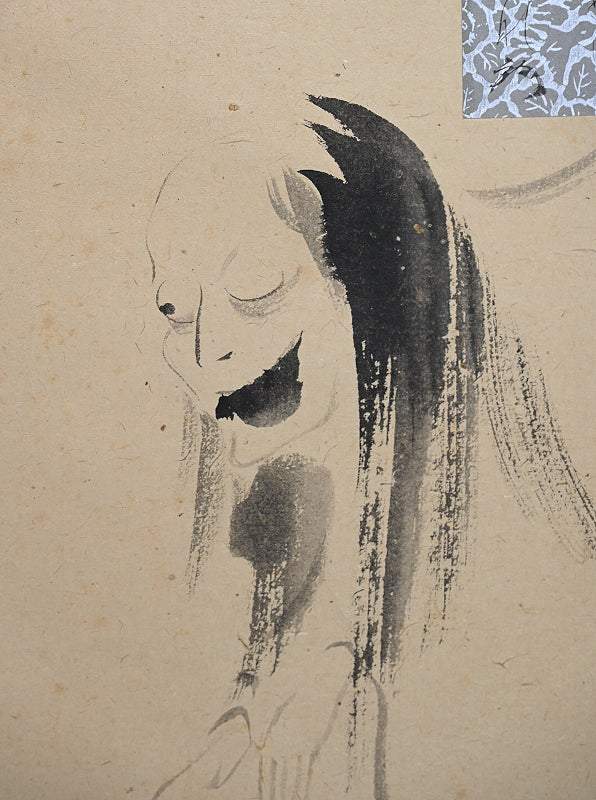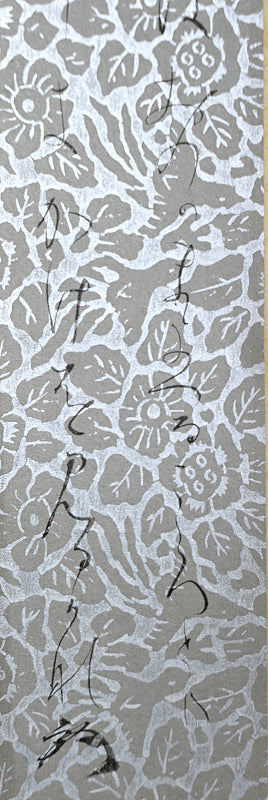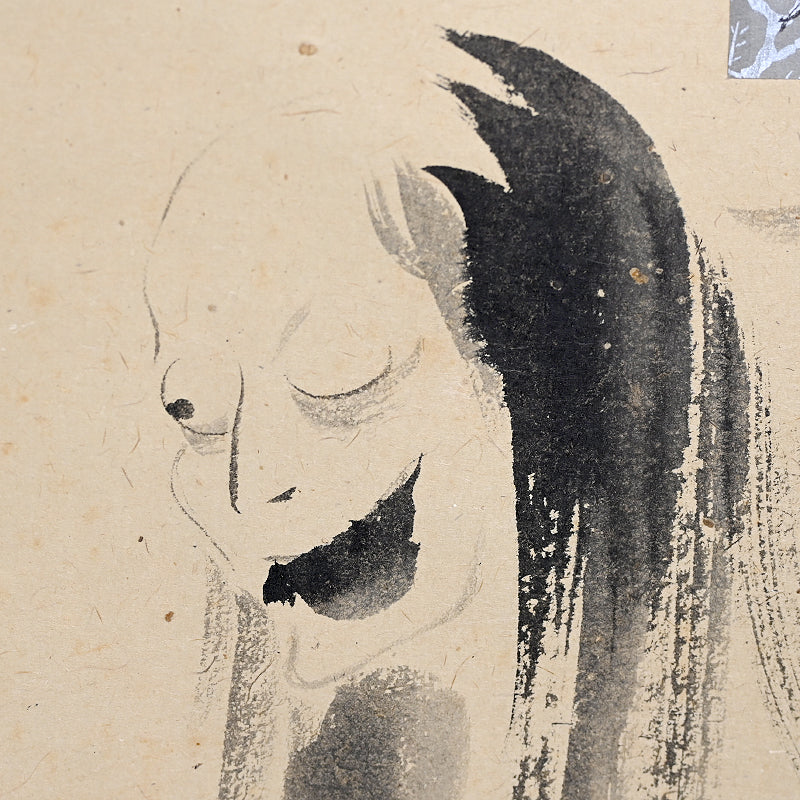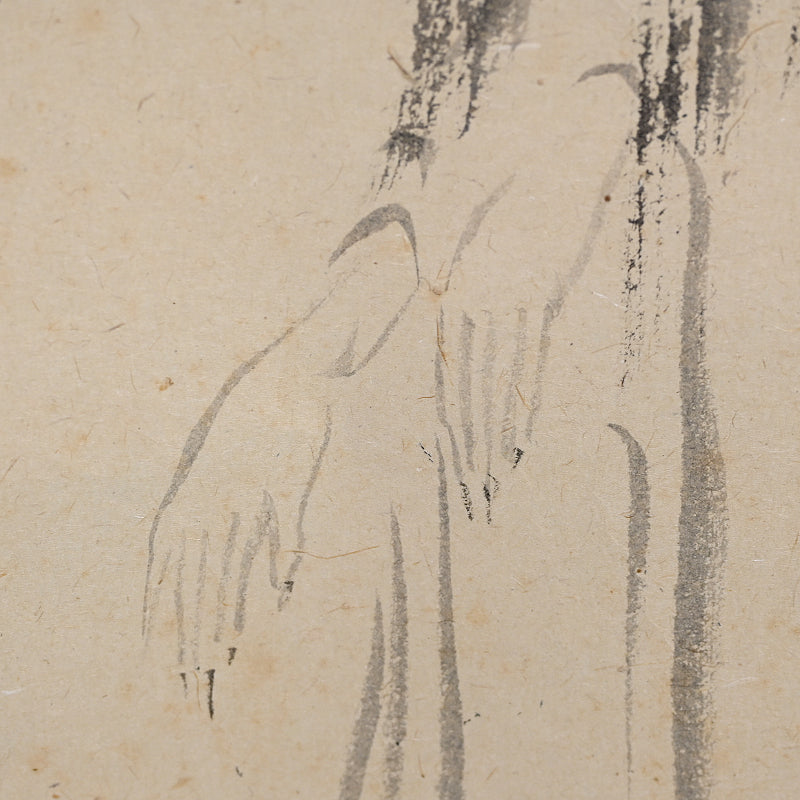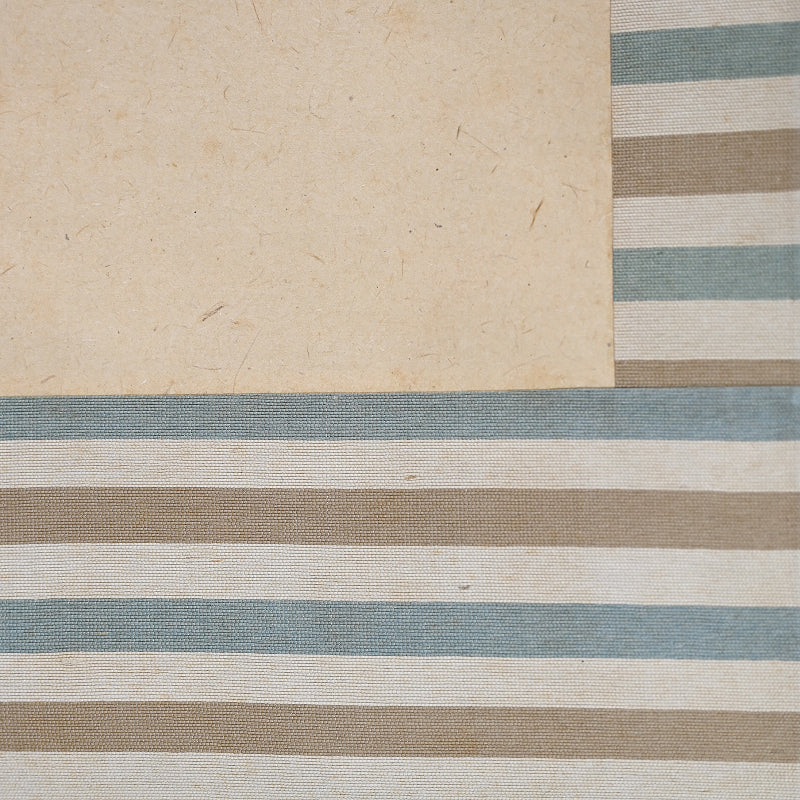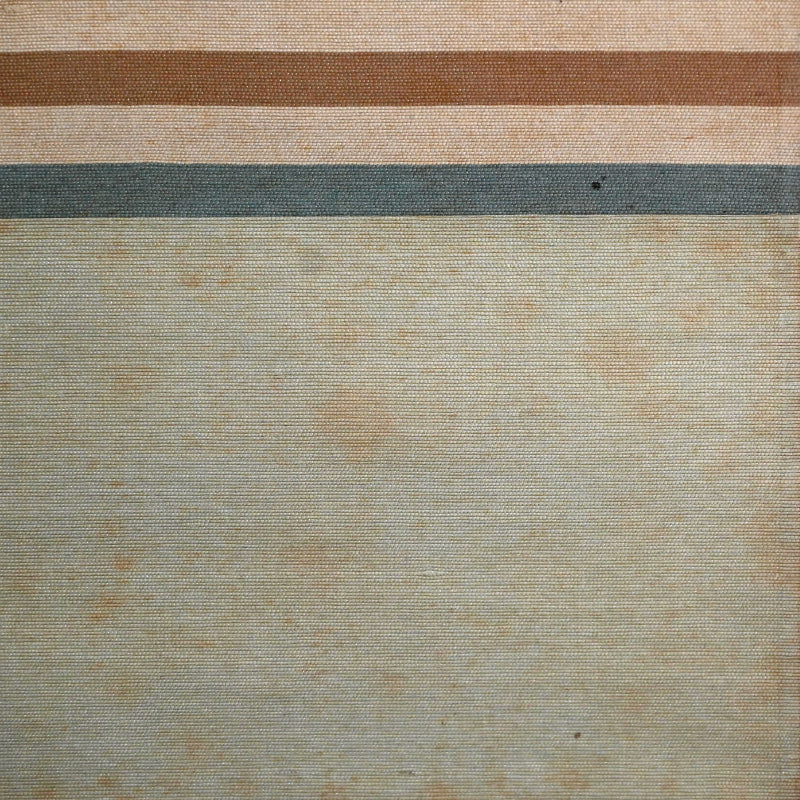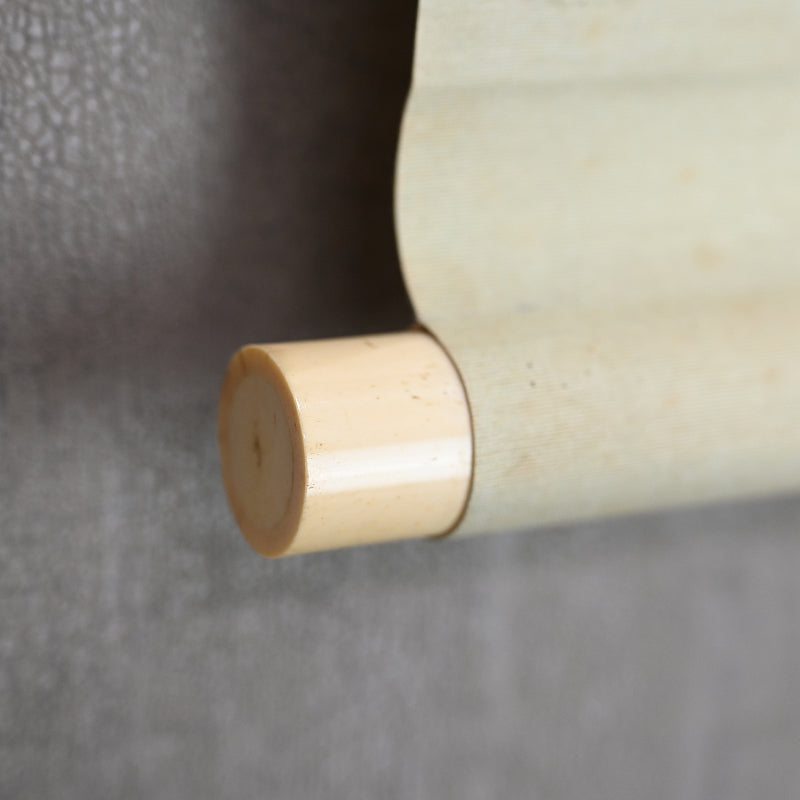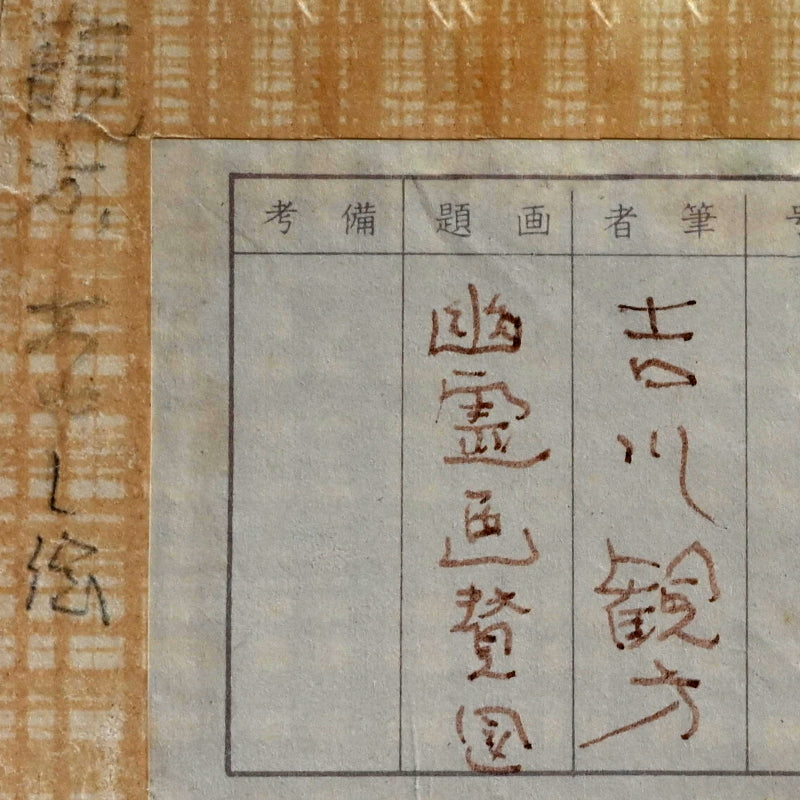Rare! Taisho p. Ghost Scroll ー吉川 観方 “幽霊画賛図”
Rare! Taisho p. Ghost Scroll ー吉川 観方 “幽霊画賛図”
Item Code: Z091
Couldn't load pickup availability
A ghostly apparition looms out of the mosquito net in the shadow beyond the lamp on this painting decorated with a tanzaku poem card by Yoshikawa Kanpo. Ink on rough paper in a border suitable to the Taisho period enclosed in a period wooden box. It is 36.5 x 181 cm (14-1/2 x 71 inches) with minor foxing, toning and marks typical of age. This verse reflects on the nature of the uncanny, suggesting that the ghostly vision lies not outside but within the human heart itself. The poet recognizes that what seems spectral or strange is often the projection of one’s own unsettled spirit, yet still acknowledges the compelling power of such apparitions. In its brevity, the poem captures both fear and introspection, blurring the line between inner turmoil and the supernatural.
The poem reads:
Ayashisa ha onoka mayoeru / The eerie presence is but the reflection
Kokoro to ha / of my own unsettled heart;
Shitte ayashi yo kake wo mirukana / Aware, nonetheless, I see the phantom shadow.
Yoshikawa Kanpo (1894-1979) was born in Kyoto, given name Yoshikawa Kenjiro. He began tutelage in the arts with calligraphy under Okasaka Tetsuzan from age 6, and his genius was quickly noticed by one of the most important painters of the time, Takeuchi Seiho, and he was invited into Seiho’s personal atelier from the incredibly early age of 7. After graduating elementary school he began studying poetry under Fujiwara Shigenami in 1907, and in 1909 began personal studies of Ukiyo-e and printmaking. In 1914 at the age of 20 he entered the Kyoto Municipal School of Painting. Three years later, he was accepted into the 11th Bunten and was awarded Nyusen status for his painting Butai no Kage (In the Shadows of the Stage). Upon graduation, while pursuing further studies, he took a job as a set designer and painter and began working with the famed artist Miki Suizan creating woodblock prints. This would be the first of many collaborations with other artists, and he would spend his career researching ancient art and old techniques, for which he would earn much respect from many of the great artists of his time including Ueumura Shoen, who took part in his study group on portrayals from life held in his home in Higashiyama in the 1930s. He would also delve into textile dying, revival of Kaidan ghost tales and art, Doll creation and many other aspects of traditional Japanese Arts. He was recognized by Kyoto Shinbun in 1966 for his advancement of the arts, and was awarded the first order of cultural merit by Kyoto city in 1968. He died in 1979, after a long and very successful career. So important was he that the posthumous book on Kyoto Culture was titled Yoshikawa Kanbo to Kyoto Bunka (Yoshikawa Kanbo and the Culture of Kyoto). This piece was exhibited at the Nara Bunkakaikan in 1972 and published in the aforementioned book. He is held in the Collection of the Kyoto University of Fine Art Museum.
Share
